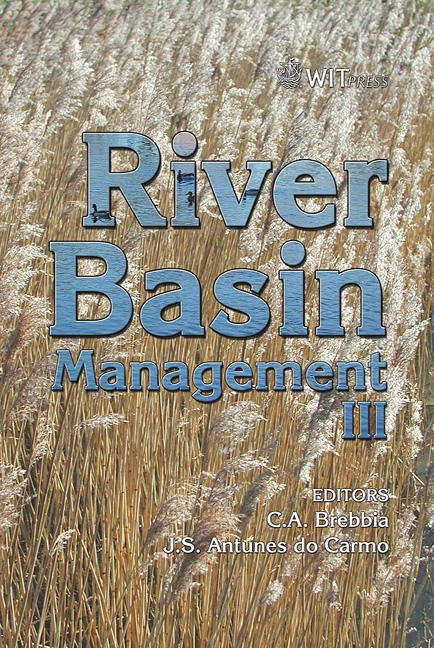A New Method In Determining Bulk Hydraulic Conductivity Of Mangrove Forest Sediment
Price
Free (open access)
Transaction
Volume
83
Pages
10
Published
2005
Size
780 kb
Paper DOI
10.2495/RM050071
Copyright
WIT Press
Author(s)
A. Susilo
Abstract
The flow of groundwater from mangrove swamp sediment to mangrove creeks is likely to be an important pathway in mangrove swamps, particularly for the removal of salt excluded at the mangrove root. The swamps are generally saturated with water, and are perforated with animal burrows, allowing a significant groundwater flow to mangrove creeks to occur. The hydraulic conductivity of the sediment is thus an important physical parameter but is very difficult to measure in-situ. This paper describe a simple method for determining the hydraulic conductivity of mangrove sediment, including the effect of macropores such as crab burrows, that use the existing animal burrows as piezometers. Experiments to measure the hydraulic conductivity of the sediment were carried out in a variety of mangrove forests. It was found that hydraulic conductivity varied from around 1 m/day–10 m/day, which is at least 10 times greater than would be expected if there were no burrows. In order to check the validity of this method, conventional piezometers were used to determine the free water table level in an area of mangroves fringing a creek. The hydraulic conductivity determined from these experiments was found to be consistent with the new methodology. Keywords: hydraulic conductivity, mangroves, burrow, piezometer. 1 Introduction The salinity of the groundwater has a significant influence on the growth of mangrove trees. Mangroves that grow in areas that are frequently inundated by the tide, or that grow in lower salinity regions of the estuary, are likely to grow more rapidly than those living in regions where the swamp is rarely inundated, and where groundwater salinity is very high [1].
Keywords
hydraulic conductivity, mangroves, burrow, piezometer.





